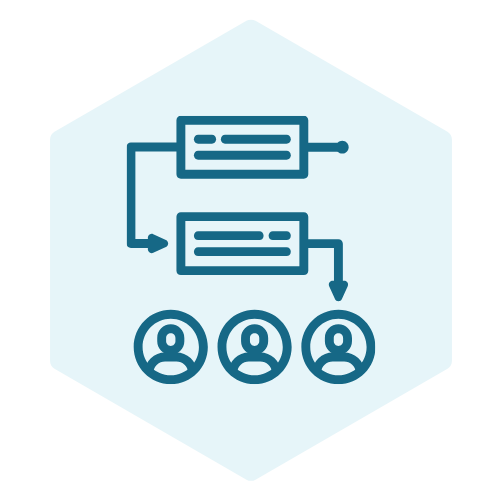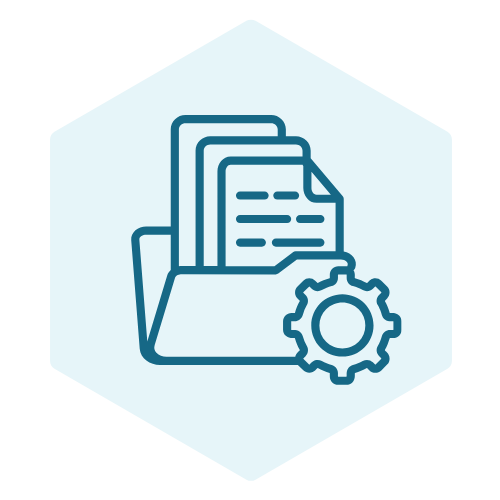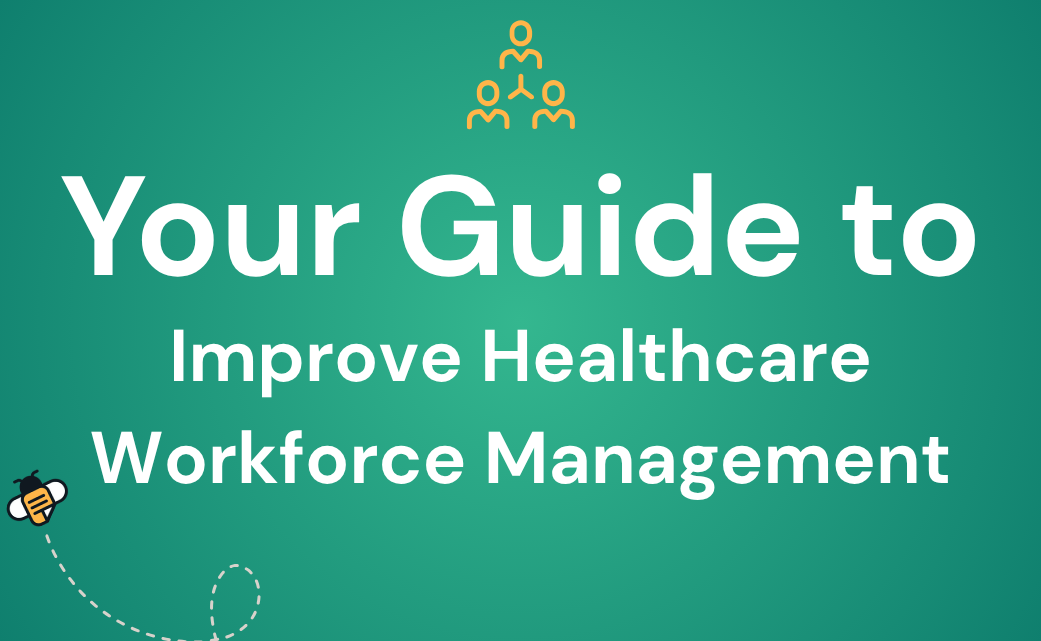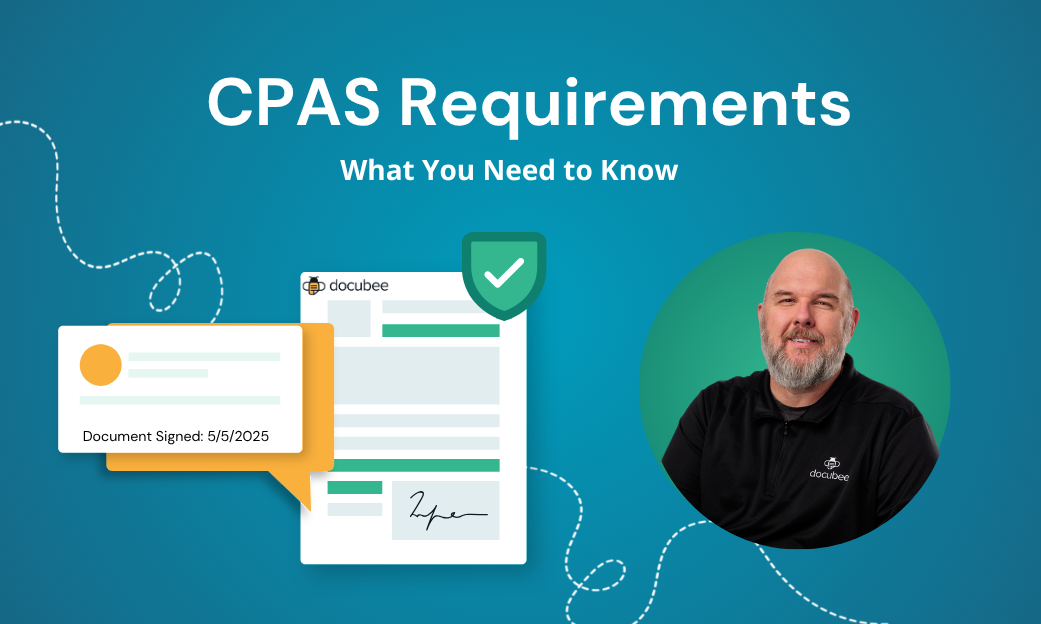Contracts rule our work lives. They’re the proverbial lifeblood of a business and critical to its success.
Yet it can be difficult to navigate, read, understand, and extract data from complex contract documents to ensure their clients aren’t exposed to risk. What’s worse is if the organization still relies on a manual review process, making for more tedious and time-consuming tasks.
Good news: contract review automation exists to help laypeople and legal professionals navigate even the most complex contracts while making contracting quicker.
Learn what contract review automation is and how it can improve things for your legal team and organization.
What is Automated Contract Review?

Automated contract review is a streamlined process of reviewing legal agreements or contracts and associated repetitive tasks using solutions powered by artificial intelligence (AI) and machine learning (ML).
The real work of contract review is often performed by junior lawyers and paralegals, but advanced technology has replaced the manual contract review process, making work easier.
When a lawyer opens a contract in a word processor program like Microsoft Word, the contract review automation tool intelligently scans the document, reviewing it against your company policies. Then it flags up any risks and suggests helpful mitigation measures.
Let’s review some reasons for adding a contract review automation tool to your organization’s tech stack.
Benefits of Automated Contract Review
There are several advantages of using contract automation solutions. Such as the ability to dig through legalese, summarizing difficult terminology in plain language, and highlighting key points.
Here are some of the main benefits for your business:
Streamlined Contract Revision
With an automated contract review tool, lawyers can automate and make the contract review process quicker, more accurate, and more predictable.
Once the tool scans the contract, flags any risky areas like missing clauses or errors, and submits suggestions, lawyers can revise and update the document, accept, edit, change, or reject the AI-generated suggestions.
In this way, the technology streamlines the time-consuming, tedious, and expensive contract review and revision process, saving your company time and money.
Contract Tracking
An automated contract review process not only makes revisions easier, but it also helps your legal team review and track multiple versions of the contract documents. That way, you can avoid or prevent the challenges that come with tracking and duplicated work.
Plus, contract review automation software maintains and controls contract versions better than manual solutions would.
Enhanced Visibility and Accessibility
Automating the contract management process improves the visibility and accessibility of your contracts. This is essential to manage risk, and improve compliance and business performance.
Automated contract review solutions organize legal documents in a logical and consistent way, preventing duplication and confusion. This is made possible through tags, labels, and document categories, making them easier to find and filter.
You can assign team members different roles and permissions so they can access and edit the contracts they need. And with the data and feedback the tool offers, you can monitor and optimize contracts, enhancing their visibility, accessibility, value, and performance.
Faster Decision-Making
By using automated contract review software, attorneys can work faster and more efficiently instead of spending hours reviewing the contract language, relevant clauses, and doing due diligence.
This not only speeds up the decision-making process but also helps law firms close deals more quickly while allowing employees to focus on higher-value tasks.
Automated vs Manual Contract Review
Contract review, both automated and manual, is a structured process. But there are some key differences in automated and manual contract review processes, which can speed up or slow down a transaction.
Automated contract review is a streamlined process involving AI and ML technology, which assess patterns in a contract and apply them to each category of agreements. AI highlights the standard or important aspects that need to be reviewed in a contract in seconds, compared to a human reviewer who would’ve taken longer to do.
However, even with technology, human involvement is still necessary to ensure the contract review tools are updated with any new legal practices, developments, and processes.
Manual or human contract review is a structured process, which involves contracting and legal professionals going over draft agreements to ensure they encompass the agreed terms and align with both parties’ policies. The process involves:
- Reading and writing
- Focusing on contract terms
- Defining the areas that should be checked
- Redlining any changes that should be made to the document
- Adding comments/notes to the contract
Unlike automated contract review, the manual processes tend to have more legalese or clause languages that describe standard terms, which may vary in different contracts.
The manual process takes more time, is error-prone, and drives up review costs, especially during the negotiation process, which involves multiple iterations between the contracting parties. Eventually, it affects deal velocity and slows down sales overall.
But the contract review process—manual or automated—isn’t without issues. The change of process can come with challenges that need to be addressed. Let’s review a few examples of common challenges law firms face.
Challenges of Contract Review
Here’s an overview of the most common challenges revolving around contract reviews.
Complex Contract Language
Manual contract review methods can be tedious and prone to delays, requiring your team to download templates online, manually enter many data points and clauses, and find scattered information.
Such templates can make drafting contracts with the right clauses and language difficult. Including such templates, clauses, and complex languages can result in unfavorable contract terms, missed opportunities or obligations, delays, and compliance issues.
Contextual Understanding
A contract has different sections, which means different members of the legal department need to review it to ensure it says what it should say.
Team members have to review the draft before completing and circulating it, which can be a challenge because the draft can look different from the final contract document. This means it can be taken out of context or team members may not understand the requirements.
Variability and Customization
Non-standardized contract management is another common challenge.
Legal professionals are required to review each contract drafted line by line to ensure the company isn’t exposed to legal risks or problems.
Having different contract templates and clauses circulating around the organization can be difficult to overcome, particularly in companies dealing with ad hoc contract drafting processes.
Ambiguity and Subjectivity
Contracts can be intimidating without clarity or scope on what the contractual parties are entering into. Both parties can run the danger of signing without understanding agreement terms.
Moreover, a contract goes through multiple touchpoints before sign-off. Any changes arising from negotiations, contradicting or incomplete statements, inaccuracies, and more can add to the ambiguity of the document.
Incomplete or Inaccurate Data
Companies using the manual contract review process read line by line to understand the meaning, risks, consequences, and possibly financial and legal actions.
Any changes proposed during negotiation are added to the document and the review process starts again. This cycle continues until both parties agree with each line.
This back and forth opens opportunities for incomplete or inaccurate data being added to the document, resulting in disruptions to fulfilling contractual obligations.
Contract Review Automation: Your Solution to Common Contract Challenges
How can you eliminate the bottlenecks in your contract review process for a more seamless experience? Let’s review some different ways you can do this.
Advanced Natural Language Processing (NLP)
Time is of the essence when it comes to contract review. The sooner you identify potential issues, the less likely they’ll cause issues down the line.
Solutions that can automate and accelerate the review process are becoming popular. These solutions are designed with advanced Natural Language Processing (NLP) models—a branch of AI that deals with interaction between human languages and computers.
NLP algorithms analyze and understand human language to identify potential issues and simplify the contract review process, making it accurate and consistent. This saves businesses time and resources.
Contextual Analysis Tools
ML, NLP, and cutting-edge algorithms automatically perform contract analysis, delivering precise results within seconds.
Your legal team can review contracts at scale with the least resources possible while enhancing the context-awareness of the document based on standard language, textual and syntactic similarity, and more. These tools also make it easier to understand the context of the contract deeply and semantically.
Customizable Templates and Rules Engines
Contract management software allows you to develop templates simplifying the process of updating and ensuring the most current version within your firm. This saves time and reduces any errors in the updating process.
Users also get notified of any changes, eliminating the need to send updates manually and track who is using the correct template version.
You can also personalize the templates based on certain rules or conditions, ensuring all contracts are relevant to your clients’ needs.
For example, a US-based company serving customers across the EU can set up a template that showcases geographically relevant clauses based on the location you’re dealing with. Alternatively, if you have multiple subsidiaries or departments with different contract requirements, you can have one template that auto-adjusts to each subsidiary or department’s needs, eliminating the need for separate templates and saving time.
Human-in-the-Loop Approaches
Using automated contract review tools should involve identifying concepts in the contract and harmonizing concepts found against the company’s rules.
The tool can quickly scan a document to pick out key concepts as they relate to your rules, reducing the time taken for review. However, you still need human eyes to ensure accuracy as machines can sometimes miss nuances in language or neglect to raise flags when something is amiss.
Humans also train AI models, continually monitor, and correct the tools so they can continue learning, become more accurate, and result in more cost savings and better outcomes.
Intelligent Data Extraction and Validation
Many businesses turn to contract review automation software because they scan, read, understand, and intelligently extract relevant data from contracts and validate them. That way, you can identify key clauses and other details, comparing them with your best practices, standards, and market benchmarks.
Get Started with Digital Contract Automation
Contracts are data-packed with critical information, which is why it’s important to have the right tools that can eliminate errors, reduce costs and risk, and save time.
Digital contract automation gets the review process done faster, adding efficiency and control while ensuring you unlock the business value in your contracts.
Ready to simplify the contract review process in your business? Schedule a demo of Docubee today.


















